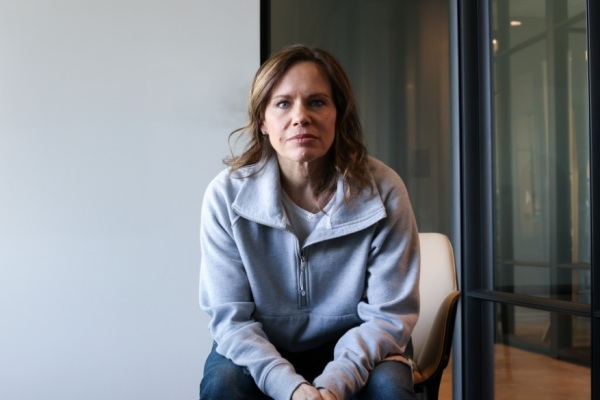In some American cities, young women earn more than young men: study

While the gender pay gap among full-time, year-round workers continues to endure nationally, a new analysis by the Pew Research Center shows that the median earnings for young women in some American cities are the same — or more — than their male counterparts.
An analysis of Census Bureau data by senior researcher Richard Fry shows that when it comes to younger workers under 30 nationally, the gender pay gap is much narrower than the general population of workers, where young women earn 93% of the earnings of their young male counterparts.
While the median annual earnings of women in 2019 registered at just 82% of men’s earnings, women under 30 in 22 of 250 metropolitan areas in the U.S. were found to be making the same or more than men their age.
In New York City and Washington, D.C. metropolitan areas, young women earn 102% of what young men earn when examining median annual earnings among full-time, year-round workers.
In New York City, for example, women under 30 had median annual earnings of $41,717 while their male counterparts earned $40,725.
In some smaller metropolitan areas, the pay gap was even more in favor of women in 2019. In Wenatchee, Washington, young women earned 120% of what young men earned. And in Morgantown, West Virginia, young women earned 114% of what young men earned.
In Wenatchee, women under 30 had median annual earnings of $30,363 while young men had annual median earnings of $25,251.
In Morgantown, the home of the University of West Virginia, the median annual earnings of full-time employed young women was $32,373 in 2019, while the median earnings for young men were $28,507.
Young women were similarly out-earning their male counterparts in other places, such as Yuba City, California; San Angelo, Texas; Winston-Salem, North Carolina; Gainesville, Florida; and San Diego, California.
In cities like Richmond, Virginia; Flagstaff, Arizona; and Los Angeles, California, the median annual earnings of men and women are even.
“From a regional perspective, metropolitan areas in the Midwest tend to have wider gender wage gaps among young workers. Young women working full time, year-round in Midwestern metros earn about 90% of their male counterparts,” Fry wrote. “In other regions, by comparison, young women earn 94% or more of what young men earn.”
The Institute for Women’s Policy Research, which provides national data on the needs of women in the U.S., contends that “[c]losing the gender wage gap would help many women and families, and particularly single women and mothers, achieve economic security.”
“For each state and the nation overall — and for the men, women, and families who live in communities around the country — equal pay could provide a significant boost to the economy,” the organization’s website, the Status of Women in the States, reads.
Recent data shows, however, that young adults have been finding it much harder to save for the future, pay for college, buy a house or find a spouse.
Research also suggests that — at least when it comes to finding a spouse — a shrinking gender pay gap may have more negative consequences for men.
In 2019, for example, researchers Daniel T. Lichter of Cornell University, Joseph P. Price of Brigham Young University and Jeffrey M. Swigert of Southern Utah University found in their study, “Mismatches in the Marriage Market,” that America is facing a significant shortage of highly educated “economically attractive” unmarried men who earned at least $53,000.
As of March 24, Zip Recruiters reports the average annual pay for men in the U.S. at $37,185.
The study results were based on comparisons between actual data on unmarried men and a synthetic profile of the ideal husband that the average unmarried woman desired, created from marriage data from 2008 to 2012 and 2013 to 2017 recorded in the American Community Survey.
“These synthetic husbands have an average income that is about 58% higher than actual unmarried men who are currently available to unmarried women. They also are 30% more likely to be employed (90% vs. 70%) and 19% more likely to have a college degree (30% vs. 25%),” the study noted.
“Our analyses provide clear evidence of an excess supply of men with low income and education and, conversely, shortages of economically attractive unmarried men (with at least a bachelor’s degree and higher levels of income) for women to marry. One implication is that promoting good jobs may ultimately be the best marriage promotion policy rather than marriage education courses that teach new relationship skills.”
A 2020 analysis by the Institute of Family Studies suggests that despite the ability of modern women to earn their own livelihoods, there is still a tendency among women to marry men who earn more than they do.
“Hypergamy turns out to be a stubborn thing. It seems that the highly-credentialed alpha female still prefers a mate above her pay grade,” wrote Kay Hymowitz, the William E. Simon Fellow at the Manhattan Institute, who studies family issues, poverty and cultural change in the U.S.
“In one of the most widely-cited papers on the subject, demographer Yue Qian compared couples in the 1980 Census and in 2012 American Community Survey. She found that during the intervening decades, though wives became more likely to marry down in terms of educational achievement, ‘the tendency for women to marry men with higher incomes than themselves persisted.’”
“In fact, women with the same or more education than their husbands were more likely to marry up.”





















